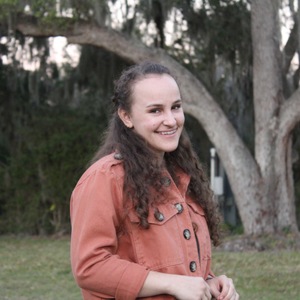I’ve had a number of new friends in college ask me about what Chanukah is, why we celebrate Hanukkah, and what’s the deal with those friend potato pancakes? And yes, I did just spell Chanuka three different ways because, in fact, us Jews haven’t yet decided on the correct spelling of this holiday name, so really just go at it however you see fit. Personally, I always go for H-A-N-U-K-K-A-H.
So, before we enter December, here’s the story of Hanukkah, the symbols of the holiday, and why we indulge in crispy latkes during this time (with sour cream and applesauce, of course).
The Story:
This story comes from the Talmud, one of the central texts of Judaism.
Hanukkah is the celebration and remembrance of a miracle that happened long ago. In the 2nd century BCE, a tribe known as the Maccabees reclaimed the Temple of Jerusalem. Inside the temple, there were oil lamps to light up the place of worship.
The warriors noticed that there was only enough oil to last one day. This is where the miracle comes in. The tiny bit of oil in the lamp miraculously lasted eight nights, giving Judah Maccabee and his warriors enough time to find more so they could begin to rebuild. This is why we celebrate Hanukkah for eight nights.
If this miraculous occurrence is not believable, you might like to focus more on the actual history of it all.
The Maccabee warriors weren’t able to celebrate Sukkot, a celebration of shelter for Israelites, at the proper time (because they were in war). Thus, they dedicated the same amount of time that Sukkot lasts to celebrate Hanukkah.
Important Dates and Symbols:
During Hanukkah, which starts on the 25th night of Kislev on the Hebrew calendar, families celebrate by lighting a menorah. A menorah is a branched lamp, having seven “branches”. More traditionally, a “hanukiah,” a menorah specific to Hanukkah, has nine branches. On each night of Hanukkah, a family member will light the shamash, the “helper candle”, to help light the other candles.
Why Latkes?
Now on to my favorite part: the FOOD.
We typically eat fried foods like latkes and sufganiyot (jelly doughnuts) to commemorate the miracle of the oil. For those of you who’ve never been graced with the tastes of a latke, they’re basically superior hash browns.
Here’s some tips on how to make the perfect batch:
Tip 1- To make the process quicker, grate your potatoes in a Cuisinart.
Tip 2- After grating your potatoes, you should press them. A cheesecloth works best for this. Just squeeze the life out of the potatoes to get all the excess moisture out.
Tip 3- Adding a touch of flour and an egg should help the latkes stay coherent while frying. Some chopped onion and a lil S&P action will keep it simple but flavorful.
Tip 4- Vegetable oil is the best for frying. Keep the latkes thin. Yes, your home will smell of fried food for a week after you make latkes, but there could be worse things.
A Crispy Concluding Claim to Consider
I wanted to write this article to increase awareness of the holiday Jewish people celebrate during the holiday season. It seems as though many people are aware of the holiday, but many don’t acknowledge or understand it. I hope this article taught you a little bit of history or just made ‘ya hungry. Happy Hanukkah, Chag Samaech. Now go eat all the latkes.


